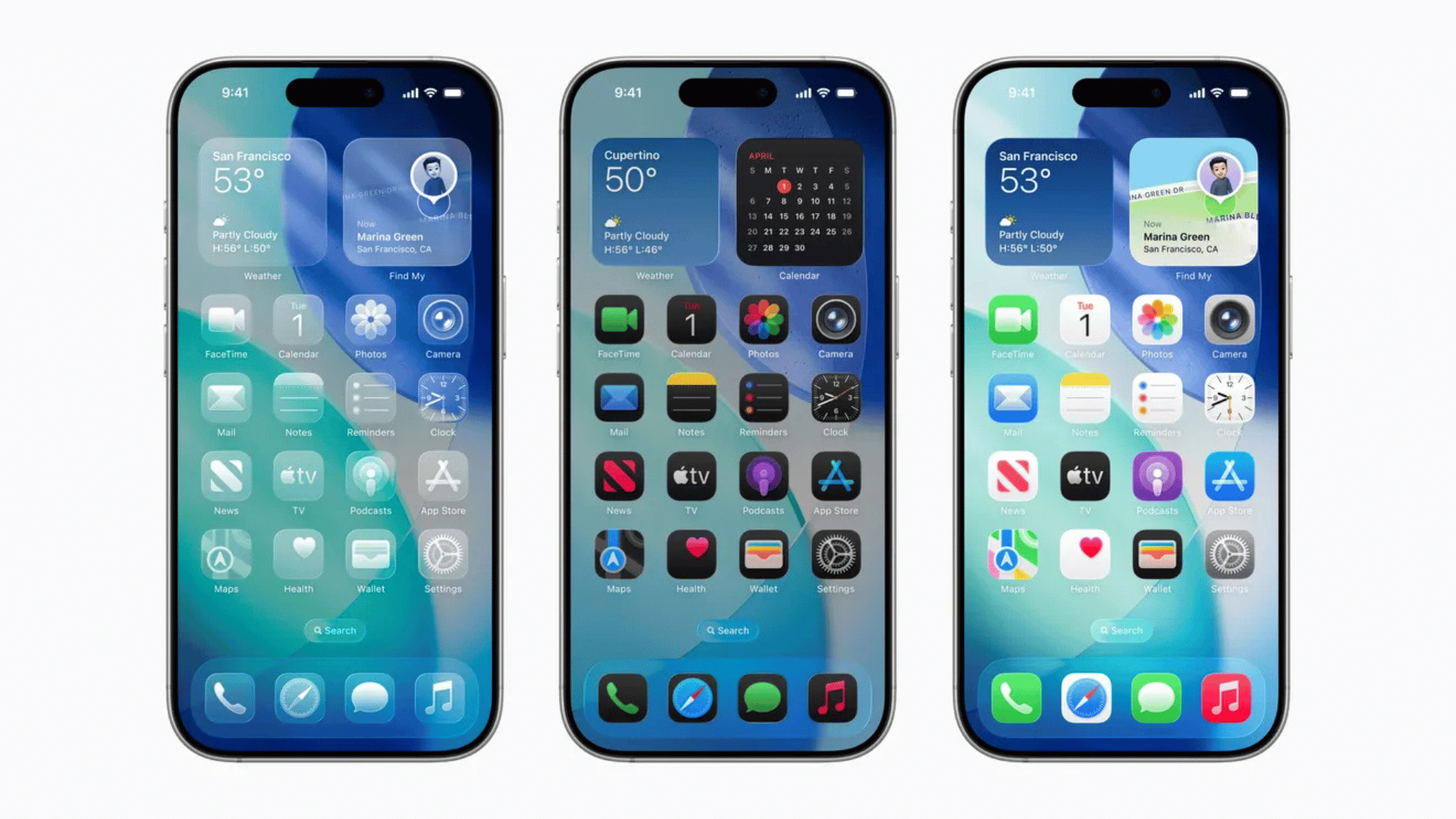Apple recently previewed its latest software design update, which is crafted from a new material called Liquid Glass. The material is translucent and reflects and refracts its surroundings to bring a new focus to content such as app icons, widgets, navigation, controls, and more.
Apple’s Liquid Glass Design

The new design will be available on all platforms, such as iOS 26, iPadOS 26, macOS Tahoe 26, watchOS 26, and tvOS 261. Inspired by the dimensionality of visionOS, the new material behaves like glass in the real world, with its color informed by surrounding content.
Created from a collaboration between Apple’s design and engineering teams, Liquid Glass utilizes real-time rendering and reacts to movement. The material will be used in buttons, sliders, text, media controls, switches, and tab bars for navigating apps. It will also be featured on the Lock Screen, Home Screen, Control Center, and notifications.
According to Apple, the controls crafted out of Liquid Glass act as a functional layer that sits above the apps.
In iOS 26, tab bars and sidebars have been redesigned so that when users scroll, they shrink to focus on the content while keeping navigation available. In iPadOS and macOS, apps like Apple TV refract the content behind them while reflecting content and the user’s wallpaper.
The time display on the Lock Screen will also be made of liquid glass to focus more thoroughly on the subjects of photo wallpapers. On the Home Screen and desktop, the Dock, app icons, and widgets have all been crafted from multiple layers of Liquid Glass.
“At Apple, we’ve always believed in the deep integration of hardware and software that makes interacting with technology intuitive, beautiful, and delightful,” said Alan Dye, Apple’s vice president of Human Interface Design. “This is our broadest software design update ever. Meticulously crafted by rethinking the fundamental elements that make up our software, the new design features an entirely new material called Liquid Glass. It combines the optical qualities of glass with a fluidity only Apple can achieve, as it transforms depending on your content or context. It lays the foundation for new experiences in the future and, ultimately, it makes even the simplest of interactions more fun and magical.”








